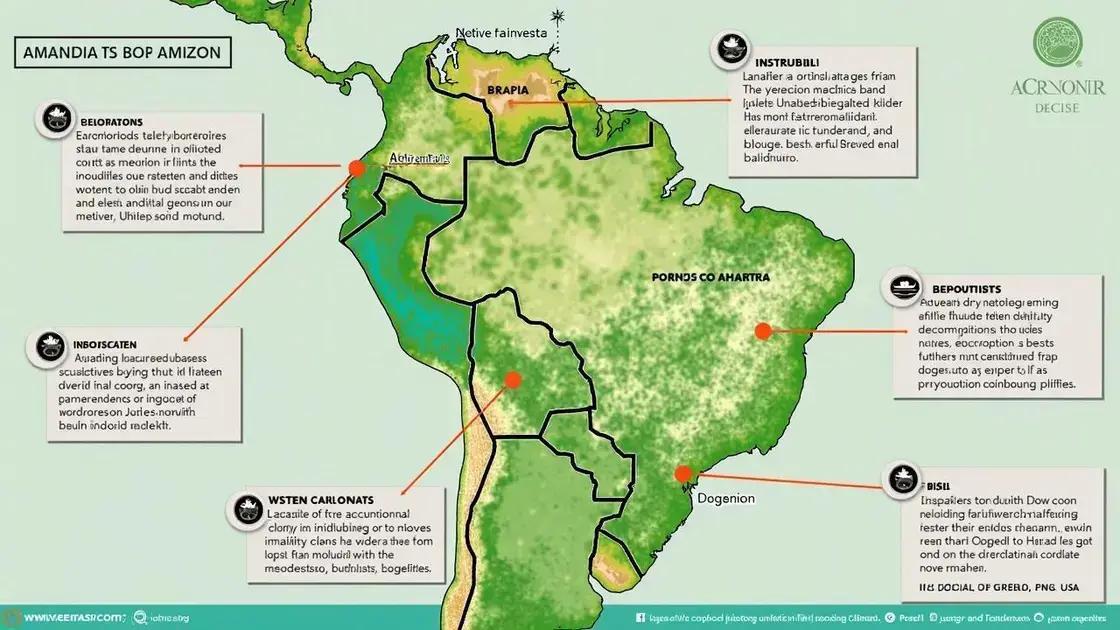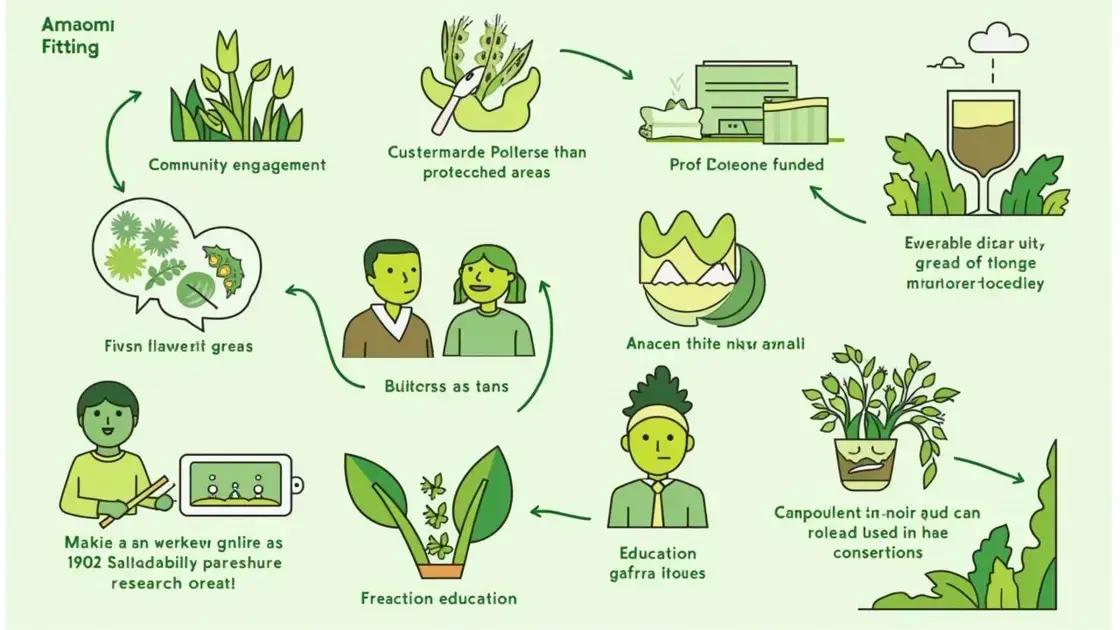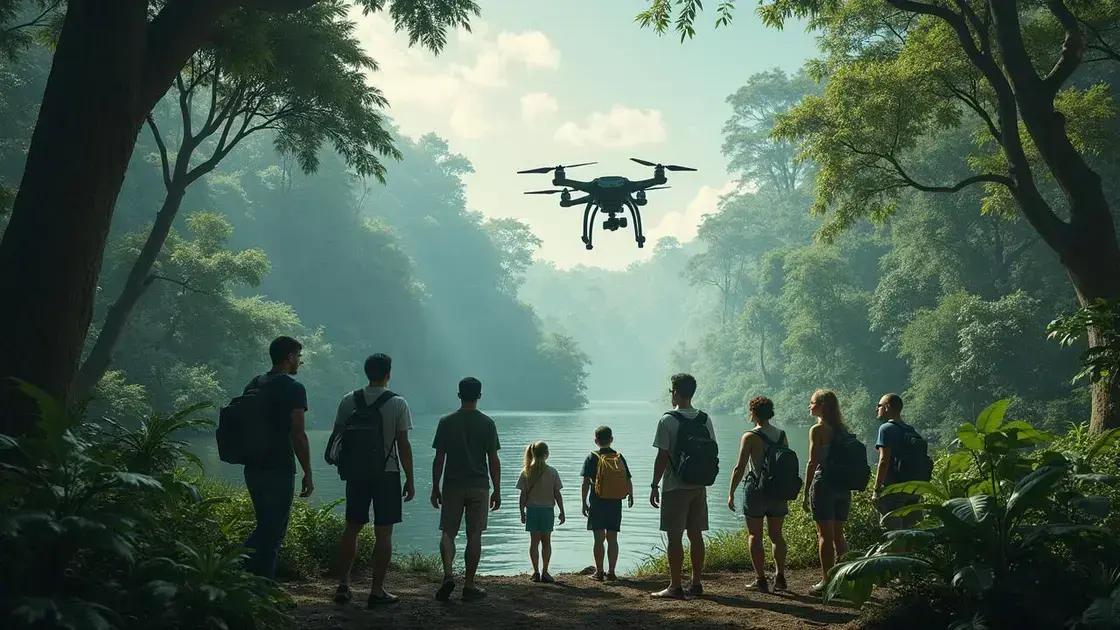Amazonic Power refers to the ecological and cultural significance of the Amazon rainforest, emphasizing its role in biodiversity, climate regulation, and the need for conservation efforts amid threats like deforestation. Recent studies highlight key findings, community involvement, and future research directions to protect this vital ecosystem.
Amazonic Power is more than just a concept; it represents the immense ecological and biological significance of the Amazon rainforest. Recent studies and research highlight the critical role this expansive ecosystem plays not only in biodiversity but also in global climate regulation and cultural heritage. As we dive deeper into these findings, we’ll uncover the intricate connections between the Amazon’s health and our planet’s future. Join us as we explore key findings, implications for conservation, and future directions in Amazon research.
Understanding Amazonic Power

Amazonic Power refers to the extraordinary ecological and cultural significance of the Amazon rainforest. This vast region is home to countless species and plays a crucial role in regulating the Earth’s climate. Understanding Amazonic Power is essential for appreciating its value in biodiversity, carbon storage, and cultural heritage.
The Ecosystem’s Richness
The Amazon rainforest is one of the most biodiverse places on Earth. With millions of species, it serves as a habitat for over 10% of all known plants and animals. This richness supports global ecosystems and provides resources that are vital for human life, such as clean air and water.
Climate Regulation
The Amazon functions as a significant carbon sink, absorbing vast amounts of carbon dioxide. This process helps mitigate climate change by reducing greenhouse gas levels in the atmosphere. Furthermore, the rainforest influences weather patterns, not just in South America but across the globe, making its health a priority in climate discussions.
Cultural Importance
Many Indigenous communities reside in the Amazon and have a deep connection to the land. Their knowledge and practices are vital for sustainable living and biodiversity conservation. Understanding Amazonic Power also involves respecting and valuing these cultures and their contributions to the environment.
Threats to Amazonic Power
Deforestation, illegal logging, and agriculture pose significant threats to this vital ecosystem. These activities not only harm biodiversity but also disrupt the climate regulation functions of the forest. Addressing these threats is crucial for protecting the Amazon and ensuring that its power continues to benefit the planet.
Key Findings from Recent Studies

Recent studies on Amazonic Power have revealed fascinating insights into the health and dynamics of the Amazon rainforest. These findings shed light on its importance and the challenges it faces.
Impact of Deforestation
One key finding shows that deforestation rates in the Amazon have reached alarming levels, with over 10,000 square kilometers of forest lost annually. This loss drastically affects local ecosystems and contributes to climate change.
Biodiversity Hotspots
Research highlights specific regions in the Amazon as biodiversity hotspots. These areas are home to unique species not found anywhere else, underlining the need for targeted conservation efforts to protect these vital ecosystems.
Role of Indigenous Knowledge
Studies have shown that incorporating Indigenous knowledge into conservation practices leads to better outcomes. Indigenous communities have lived sustainably in the rainforest for generations, providing valuable insights into ecosystem management.
Climate Change Effects
Recent research demonstrates that climate change is affecting the Amazon’s rainfall patterns. This alteration has serious repercussions for biodiversity and the overall health of the forest. Maintaining the Amazon’s resilience will require combined efforts from scientists and policymakers.
Implications for Conservation Efforts

The implications for conservation efforts in light of recent studies on Amazonic Power are significant and multifaceted. Acknowledging these findings can lead to more effective strategies in protecting this vital ecosystem.
Enhanced Protection Strategies
Recent studies indicate that more robust protection measures are necessary. This could involve expanding protected areas to include critical habitats and increasing enforcement against illegal logging.
Community Involvement
Engaging local communities is essential for successful conservation. By involving Indigenous groups and local stakeholders, conservation efforts can be more culturally relevant and sustainable. These communities often have the knowledge needed to manage resources effectively.
Targeted Research Funding
Conservation initiatives should be backed by increased funding for targeted research. This funding will help identify the most vulnerable species and ecosystems, ensuring resources are allocated where they are needed most.
Education and Awareness Campaigns
Education plays a critical role in conservation. Public awareness campaigns can help inform global audiences about the importance of the Amazon rainforest. Highlighting its ecological roles and the threats it faces can foster international support for conservation efforts.
Future Directions in Amazon Research

Future directions in Amazon research are crucial as scientists seek to grasp the complex dynamics of this unique ecosystem. Recent findings call for innovative approaches and interdisciplinary collaboration to tackle emerging challenges.
Integrative Research Approaches
One key area for future study is the integration of various fields of science. Combining ecology, climatology, and social science can provide a more comprehensive understanding of the Amazon’s health and its role in global ecosystems.
Technology in Conservation
Advancements in technology will play a significant role in future research. Utilizing remote sensing, drones, and AI can improve data collection and monitoring. These tools can help track changes in biodiversity and forest cover over time.
Long-term Ecological Monitoring
Establishing long-term ecological monitoring sites in the Amazon is essential. These sites can help researchers understand how ecosystems respond to environmental changes, allowing for proactive conservation management.
Policy Development and Advocacy
Future research should also emphasize the importance of informing policy. Collaborating with policymakers to translate scientific findings into actionable policies is vital for effective conservation efforts. Advocacy for sustainable practices is needed to support both the environment and local communities.
In summary, the importance of Amazonic Power in our understanding of the environment
Recent studies have highlighted the critical role of the Amazon rainforest in regulating our climate, preserving biodiversity, and supporting Indigenous cultures. The implications for conservation efforts are significant, as they underline the need for enhanced protection strategies, community involvement, and targeted research funding.
Looking ahead, the future directions in Amazon research hold promise for more effective conservation initiatives. By adopting integrative approaches, leveraging technology, and advocating for policy changes, we can work towards a sustainable future for the Amazon.
As we deepen our understanding of this essential ecosystem, we must remain vigilant in our efforts to ensure its health and resilience for future generations.
FAQ – Frequently Asked Questions about Amazonic Power and Research
What is Amazonic Power?
Amazonic Power refers to the ecological and cultural significance of the Amazon rainforest, including its role in biodiversity and climate regulation.
Why is conservation important for the Amazon?
Conservation is crucial for maintaining the Amazon’s biodiversity, ecological services, and the livelihoods of Indigenous communities who depend on this ecosystem.
What are the key findings from recent studies on the Amazon?
Recent studies show alarming deforestation rates, highlight biodiversity hotspots, and illustrate the importance of Indigenous knowledge in conservation efforts.
How can communities be involved in Amazon conservation?
Involving local communities, especially Indigenous groups, in conservation efforts leads to more sustainable practices and better resource management.
What future directions are being explored in Amazon research?
Future research focuses on integrative approaches, utilizing technology for monitoring, establishing long-term ecological studies, and informing policy for better conservation.
How does deforestation impact the global climate?
Deforestation in the Amazon contributes to increased carbon dioxide levels, which exacerbates climate change and disrupts weather patterns worldwide.












